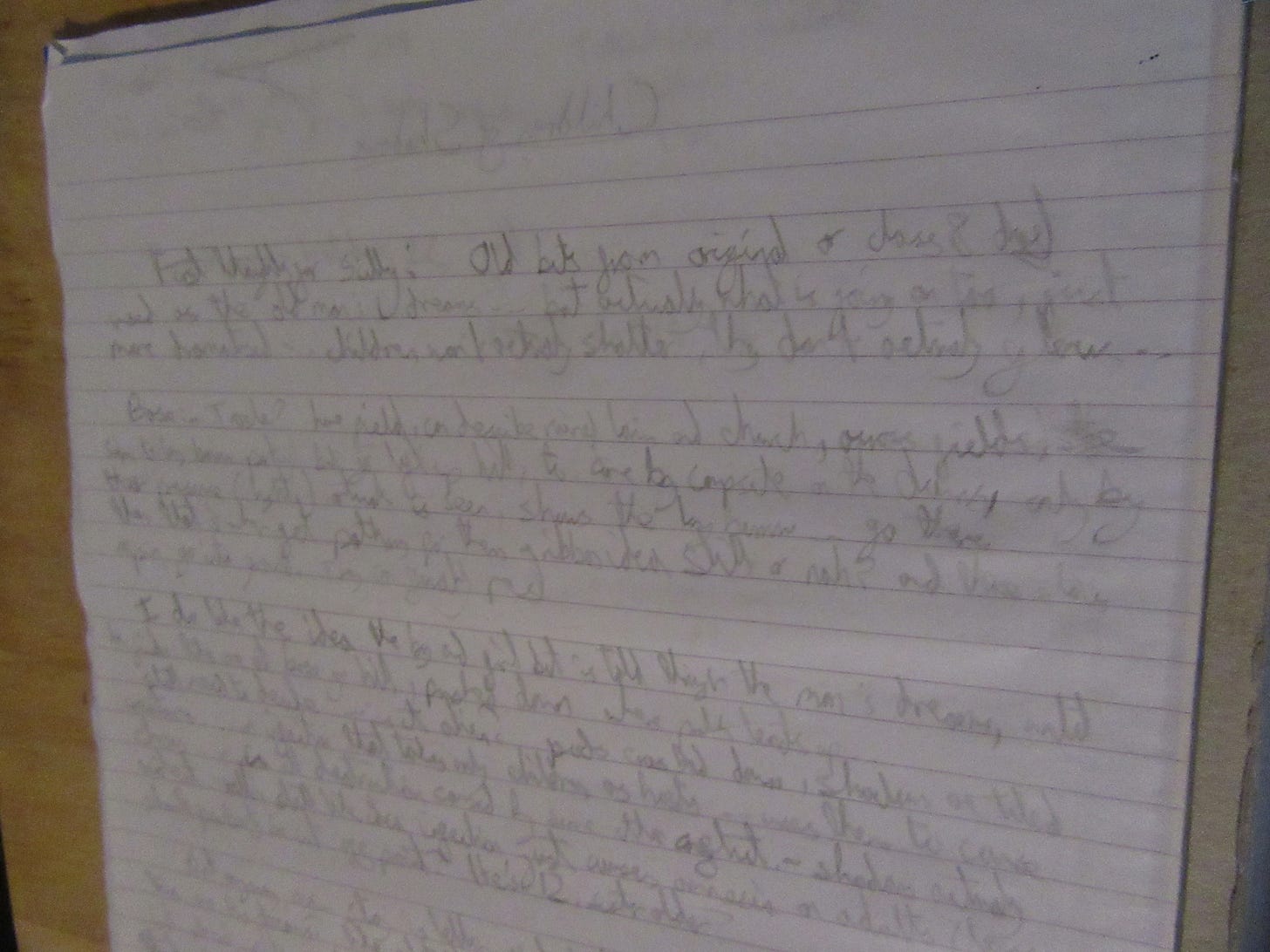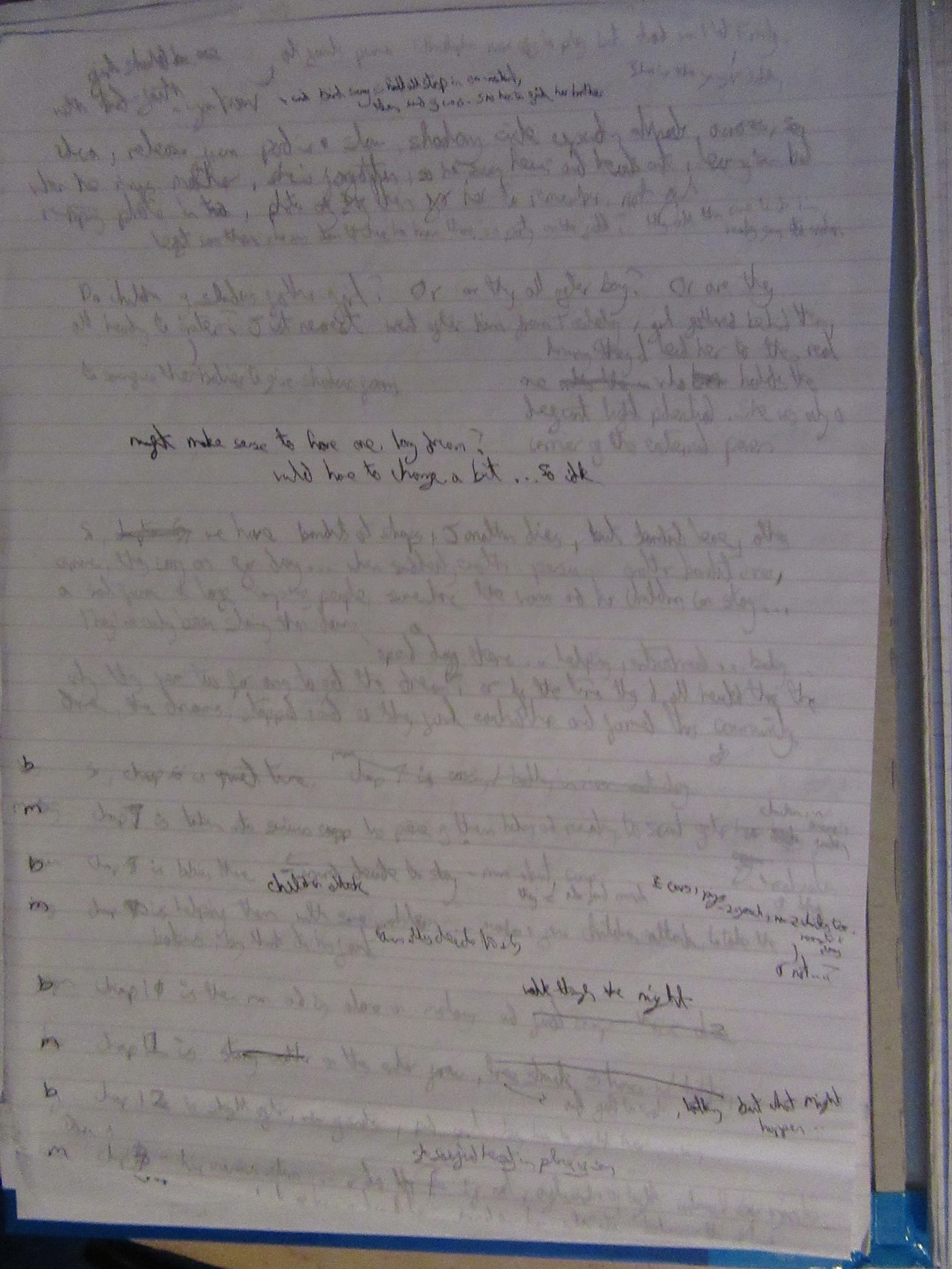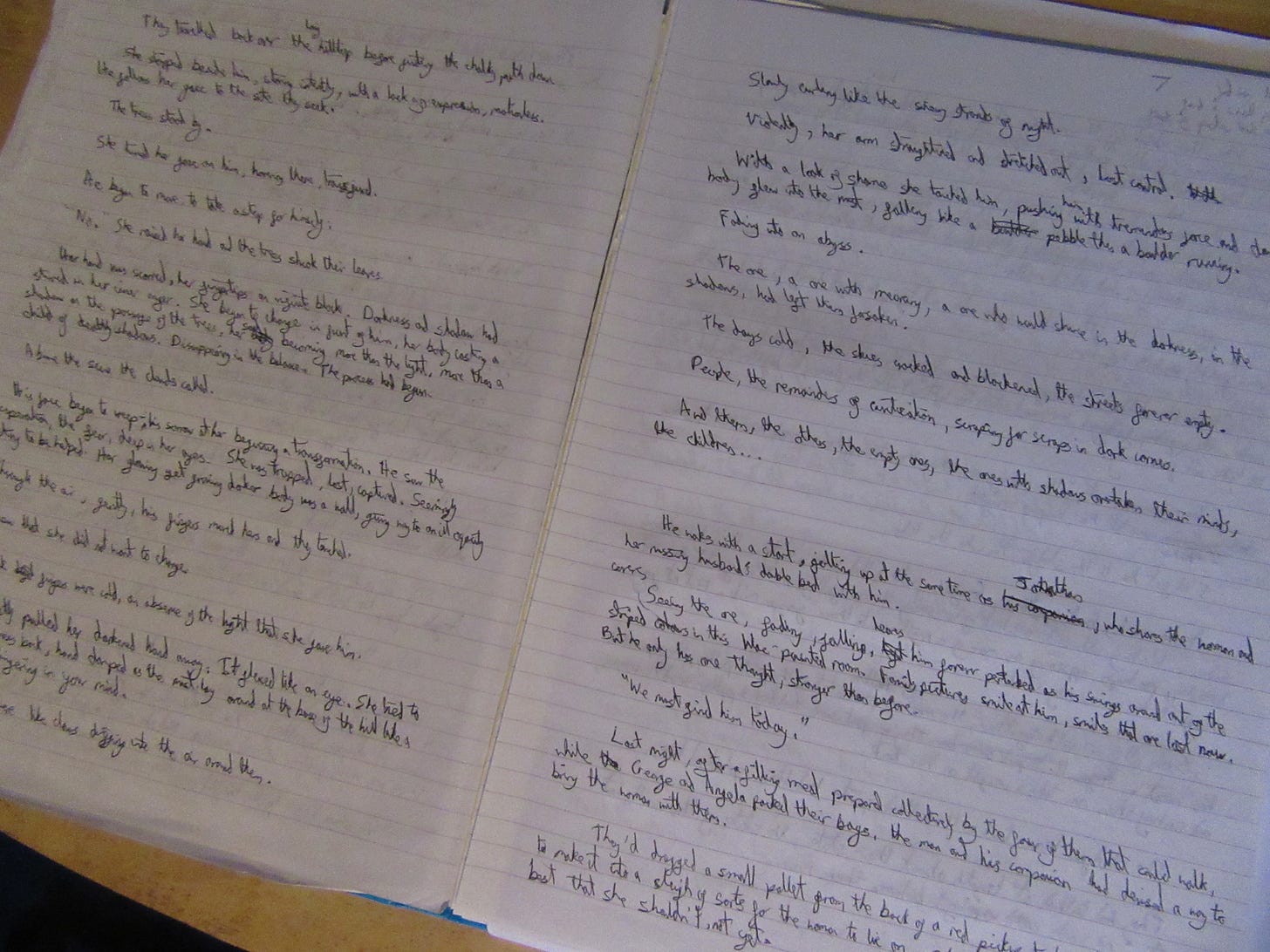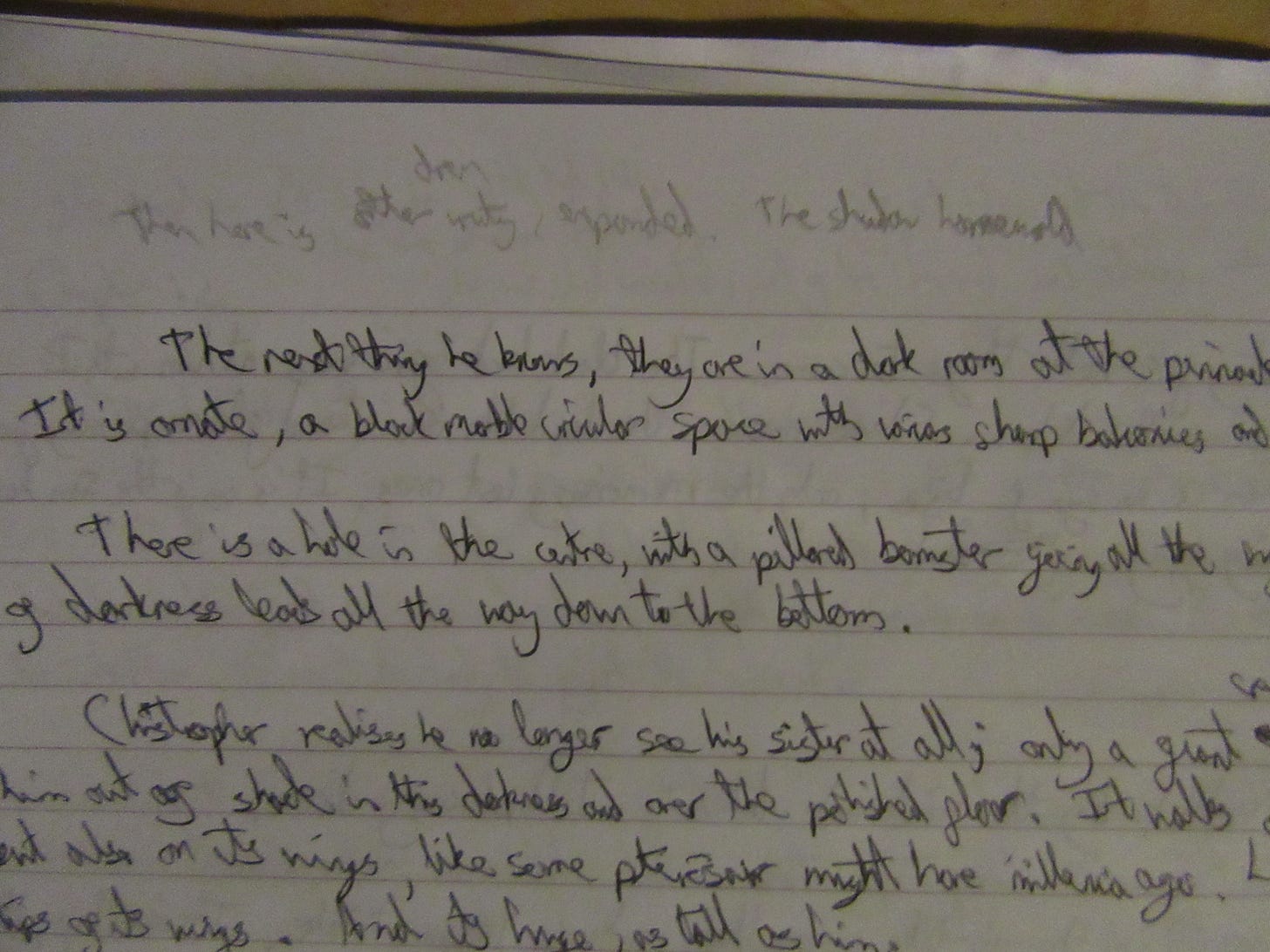Welcome to this week’s writing journey post - the last of the year! As I said in Sunday's roundup, I’m mulling over whether to switch platforms for this newsletter. But that’s neither here nor there. I hope you've all had and will continue to have a great Christmas/holiday time.
Last Wednesday was the coda post of sorts to the self-publishing portion of my writing journey - I talked about releasing them all in four chronological omnibus volumes in spring of 2021. Link to that post here.
Today I’m going to take you through the process of writing the novella that I’ve serialised on this newsletter, Children of Shadows. SPOILER WARNING IF YOU HAVENT’ READ IT ALL (and want to).
While I was doing my A-Levels and finishing up my Diamond Dimensions Universe, I was already planning to write my first full-length novel that would be the Children of Shadows story I’d first started imagining when I was ten and again at fourteen.
Now I was eighteen, it was the summer holidays, and I had visions after leaving school of just writing this novel as my vehicle to traditional publishing - it was definitely a story I was passionate about and knew, one that I believed in. I did not quite go about it as if I was writing a full-length novel as I would now. I planned it out somewhat, but didn’t plan for the length, hence the novella status. Something in me wanted to write the whole story on that two-week holiday to the Isles of Scilly, the first holiday in two years.
Since we had no Wi-Fi, and because I missed the slightly different process of writing by hand, I took a new book with me. I can’t remember when I wrote my first pencil planning thoughts, whether it was shortly before we went on holiday or the first night we got there or something. It would be a sort of hallowed way to write the story, a chapter a day I decided. So it would be fourteen chapters, and I decided my protagonist, Christopher, should be fourteen, the age I was when I wrote the playscript version, the combined version of my father’s and my original writing from when I was ten, and when I wrote a new version of the story more like the playscript. So, fourteen became an important number to the story, to the whole series of stories I’ve told since then - fourteen stones in Christopher’s vision he receives at the long barrow.
Anyway, in the pencil notes above, you can see I had the realisation that I should base the book on the village where I went to primary school, basing it in a location I knew so well that had all the features already in the older texts - a school field, a cave, a hill, ancient stones.
The next important thing was to decide in the structure that shaped the story - alternating POVs from Christopher, the boy, to his father, the man. I suppose lots of the work was done for me - I had access to my previous versions on the family laptop.
Of course the most important decision was to re-use the original version as dreams, to declare that those past-tense passages with a different narrative voice would be dream-version of events happening off the page. It kept some mystery, and allowed me fully to focus on the man as a protagonist at first, someone with no memory or idea of what is going on - of course the dreams give him clues. To accompany him I kept the characters from the playscript version, and they became much more important in this version, at least playing more of a part. I gave George and Angela’s mum an injury to adapt the use of a sledge for these survivors that was so important in that first version.
So for those first three chapters, those first three days of writing, I’d copy down and combine sections from the laptop to my book, and write from there. One thing that was different for writing this story was my decision to write the whole thing in present tense. Since first experimenting with the tense in the interludes of my self-published Watchers series, I’d decided for a fun exercise to novelise four unfinished animations for an arc of the animated Star Wars: The Clone Wars series (it was the use of present tense in the Star Wars Aftermath novels that first inspired me to try it). I’d really enjoyed writing in that more urgent voice, so used it for Children of Shadows too (except those first three dreams at the start of each chapter).
It felt good to write by hand though, without music or other distractions, combining the elements of the original version with places from my memory across South East England. The story begins in the village based off where I went to primary school, meets places in between I drew from memories, and ends in the town where I went to secondary school. In a way it’s my journey through time and moving from Kent to Sussex, only on foot and following an ancient straight-line map.
Chapter five onwards though left behind most of the elements of where the story had reached in previous versions - there were new incidents in the second act portion of the story. (In some ways I was writing it like a screenplay without fulling knowing I would write a film-script version before the year ended.) The incident with the baby of shadow was new, the whole community and its characters were new. Mr. Pearson came into being like a combination of two teachers I’d had, and Charles, Lucy and Doug were plucked from Wycliffe, a Cornwall-based murder mystery series we were watching at the time. The motorway incident in chapter ten also just came to me as a new set piece.
The last new thing to be added was the dream battle at the crater. The crater itself was always the climax to the story, and it plays out similarly to the playscript version, just with the added nightmare elements, a much more visual way to show the battle between Christopher and his sister Emily.
The thing about that dream battle, the giant crow-transformation, the dark tower, the sculpture of layers of reality (even the chunky nosebleed though that was a separate one), were already written in some form in the winter of 2019. That’s because they were pulled directly from my memory at that time. Obviously with the addition of Christopher and Emily, the fact that the crow visualised her shadow (and combining my nosebleed nightmare with it), the whole scene was a real dream. I was kidnapped from school by a crow-woman and taken to a tower, had seen that statue called Mortis. (I think most of it came from the Mortis episodes the The Clone Wars actually - we were doing a re-watch then before Rise of Skywalker.)
The section of Christopher walking through the wasteland/shadows’ homeworld was from a separate piece of writing I’d found in my ten-year-old writing books. I discovered it researching before we went on holiday. That chapter was the last one that I wrote, as the dream/nightmare document was on my older laptop at home. So, I almost succeeded in the chapter a day for those two weeks.
Even though of course the novella has yet to lead to any traditional publishing, I’m still very proud of it - a short exploration of my life really up to the point when I wrote it - childhood memories, sci-fi/fantasy inspirations, my interests in ancient history, my own dreams/nightmares and beliefs. It’s a story I have now in my arsenal that hopefully can be adapted to any form - as a novella, as the first part of a three-part novel, as a film screenplay and maybe next year as a comic script.
There’s also the fact that the story had never gone beyond Emily’s sacrifice before, so I had to think through what state the surviving children would be in - with their memories minus the days when they were mind-controlled, but missing a part of their souls that the shadow symbiotes took, left with monotone voices unable to express emotion and with their internal biology altered to be shells of sorts, without the need for food etc. It was a way to make the future of this world seem more manageable - there was no way twenty adults would be able to take care of thousands of children otherwise.
Like Christopher says it just felt right to bury Emily at the long barrow, and having the dove fly over was meant to be a symbol of hope, maybe that life is returning, maybe some sign of some higher power. That was a decision for when I had to write the sequel stories.
The version you’ve read through this newsletter is a little different from the first version I wrote that summer. When I wrote the screenplay version it changed the structure a little (in the first version, Christopher’s lightning-tree dreams were just one dream), and I added some extra imagery. The screenplay version also received feedback from an ex-teacher of mine who wrote some of the plays for our class and others. His feedback influenced both versions.
I don’t know whether I’ll go into that all on this newsletter, in whatever form it continues. Maybe it’s poetic in a way that I end sharing my writing journey with the story I’ve been sharing on here since first starting out in September.
It is only the day after Boxing Day, though, so I haven’t put maximum brainpower into the decision. More and more of the people I look up to on Substack are considering leaving, but maybe I’ll continue the writing journey posts just a bit less often. There’s still all about writing three screenplays and the sequel books and meeting experts and some opportunities that are coming my way now. Maybe it’s wise not to talk about them in detail online though. I’m rambling now so I’ll stop.
Thank you so much for reading! I’m really thankful for your support.
Harvey







